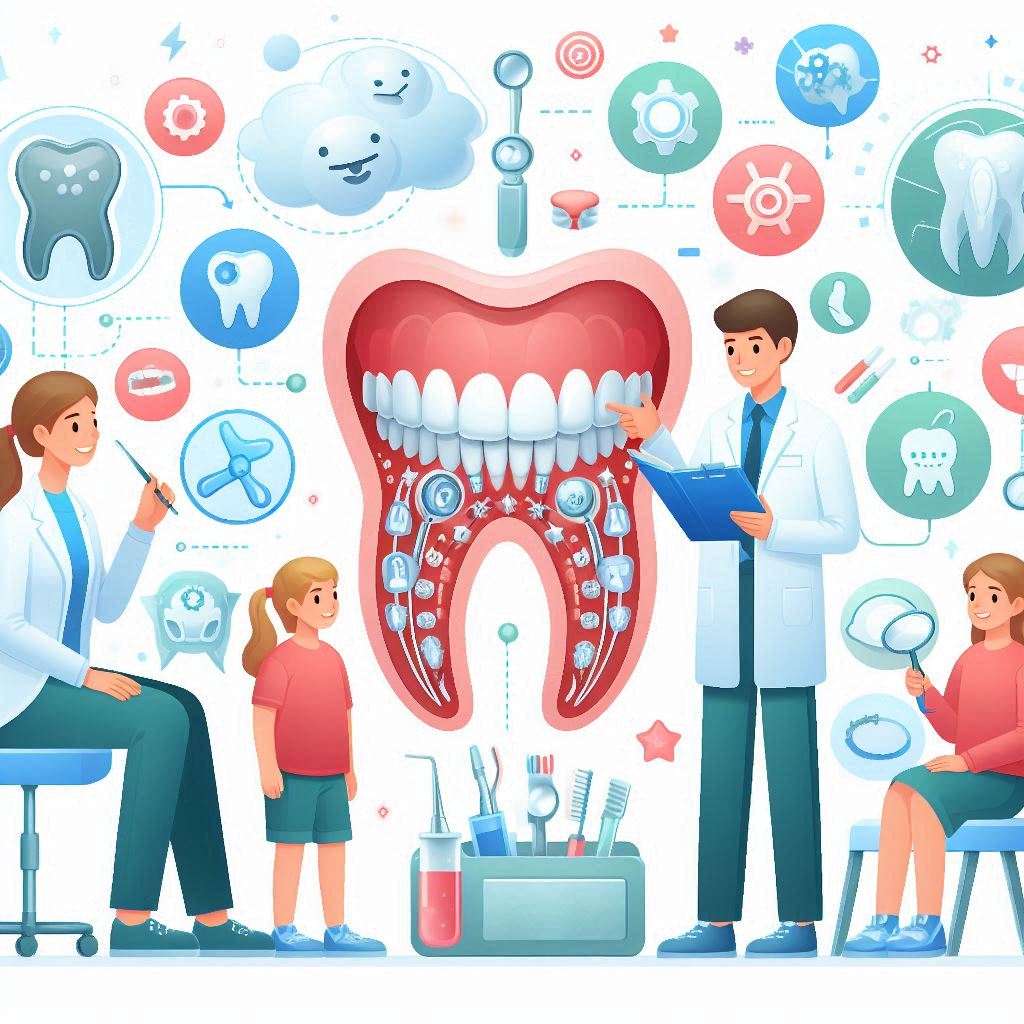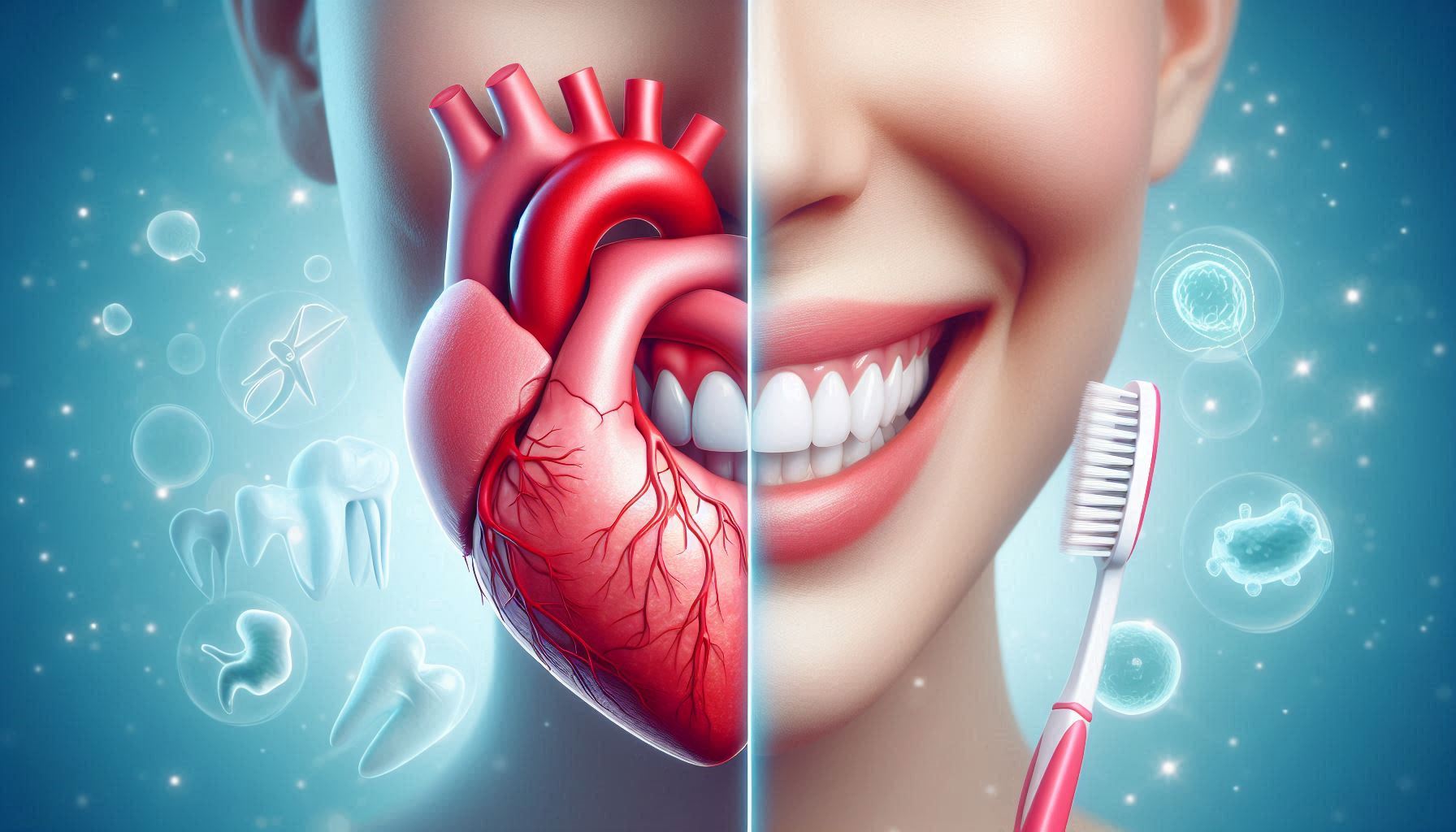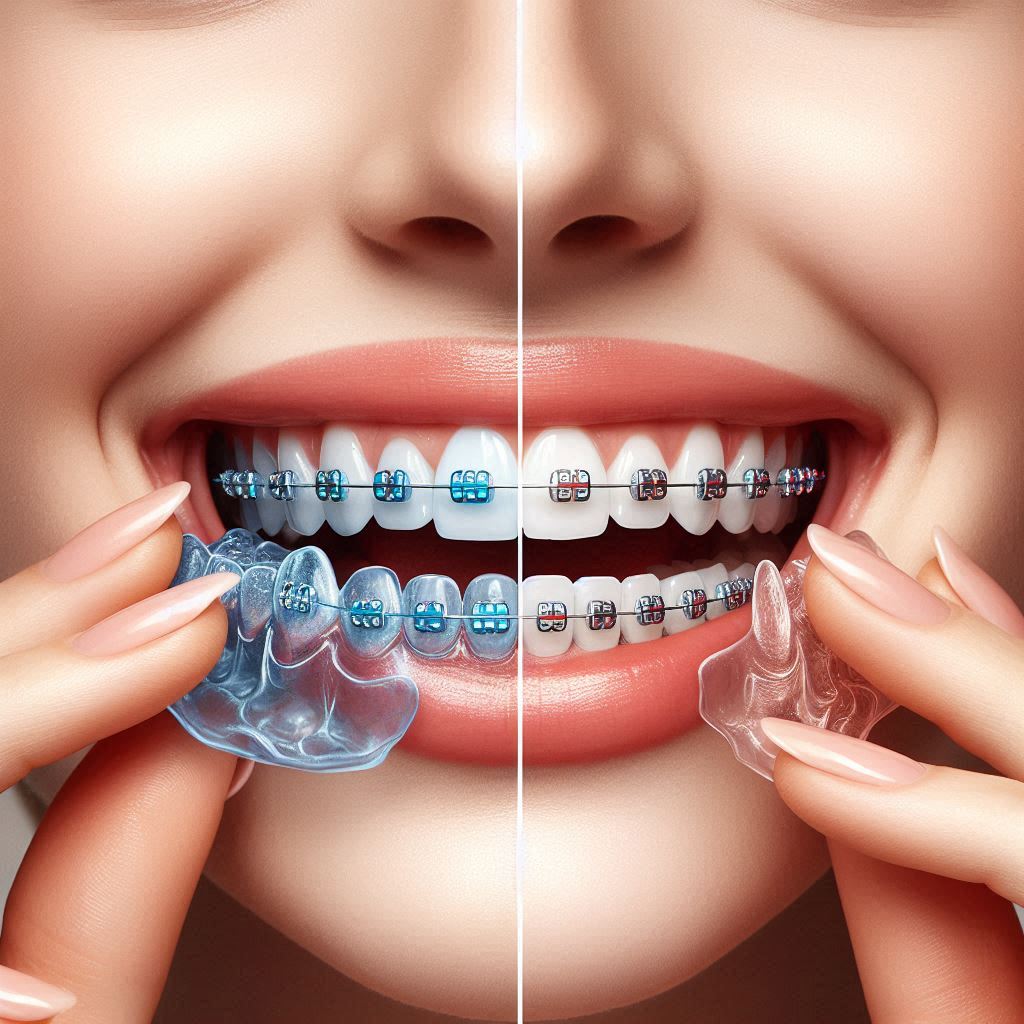Orthodontic treatment, whether for children, teens, or adults, is a transformative journey. A straight, healthy smile can enhance one’s self-esteem and can improve overall dental health by correcting bite issues that affect the way we chew, speak, and maintain oral hygiene. However, while orthodontics plays a vital role in improving the alignment of the teeth and jaws, many patients experience common problems during their treatment. From discomfort to broken appliances, and even risks of tooth decay or gum disease, these problems can delay progress or create additional challenges if not properly managed.
Fortunately, many of these issues are preventable with the right knowledge, habits, and proactive care. Whether you’re a patient going through orthodontic treatment or a parent supporting a young patient, this article will guide you through the most common orthodontic problems and offer comprehensive tips on how to prevent them, ensuring a smoother, more successful treatment process. With the right approach, you can make your orthodontic experience as comfortable and efficient as possible.
Understanding Orthodontic Treatment
Before diving into prevention strategies, it is essential to understand how orthodontic treatments work and what they aim to achieve. The primary goal of orthodontics is to correct malocclusions, or bad bites, which can result from a variety of issues such as overcrowding, crooked teeth, bite misalignments, and jaw irregularities.
Types of Orthodontic Appliances:
- Traditional Metal Braces
Traditional braces consist of metal brackets that are glued to the front of the teeth. These brackets are connected by an archwire that applies pressure on the teeth, gradually moving them into alignment. Although visible, traditional braces are highly effective and remain a popular option for patients of all ages. - Clear Aligners
Clear aligners, like Invisalign, are transparent plastic trays custom-made to fit snugly over the teeth. They are removable, making them easier to clean and more aesthetically pleasing than traditional braces. Aligners are popular with adults and teens who seek a less noticeable treatment option. - Ceramic Braces
Ceramic braces work similarly to metal braces but use clear or tooth-colored brackets, making them less noticeable. This option provides the effectiveness of traditional braces with a more subtle appearance. - Lingual Braces
Lingual braces are placed on the backside of the teeth, making them virtually invisible. This option is ideal for patients who want a discreet treatment but still need the power of traditional braces. - Space Maintainers and Expanders
These appliances are used to hold or expand space in the mouth when necessary, typically in children. Space maintainers help prevent crowding, and expanders are used to widen the palate if the upper jaw is too narrow.
Regardless of the appliance chosen, orthodontic treatments share a common objective: moving teeth into a better position to improve function, appearance, and overall dental health. Throughout the treatment, it is crucial to be aware of potential problems that may arise, and understanding the causes behind them is the first step toward prevention.
Common Orthodontic Problems and How to Prevent Them
In this section, we’ll address the most frequently encountered issues during orthodontic treatment and provide detailed, actionable tips on how to prevent them.
Discomfort and Pain
Orthodontic treatments often lead to discomfort, especially after the application of braces or following routine adjustments. This discomfort is usually due to the constant pressure applied to the teeth to shift them into their proper positions. The most common forms of pain are soreness in the gums and aching around the teeth and jaws.
- Causes:
- Pressure exerted on the teeth and jaw during adjustments.
- New braces or appliances that rub against the inside of the mouth.
- Prevention Tips:
- Use Orthodontic Wax: Applying orthodontic wax to brackets and wires can create a smooth surface and reduce irritation on the inside of the cheeks. Wax can also protect the gums from being scratched by sharp edges of the braces.
- Pain Medication: Over-the-counter pain relievers, such as ibuprofen or acetaminophen, can help alleviate pain and reduce inflammation. However, always consult your orthodontist or dentist if you’re uncertain about medication.
- Ice Packs: Applying ice to the jaw or face can reduce swelling and numb the area, providing relief from the pain.
- Soft Foods: For the first few days after getting braces or an adjustment, try to eat softer foods that are easier to chew and less likely to aggravate any sensitivity (e.g., mashed potatoes, soup, smoothies).
- Saltwater Rinse: Gargling with a warm saltwater solution can help reduce gum irritation and provide relief from the soreness caused by braces or aligners.
- Avoid Hard or Sticky Foods: Avoid biting into hard foods like nuts or sticky foods like caramel, which can irritate sore gums and may cause discomfort if they get stuck in the braces.
Broken or Loose Brackets and Wires
One of the most common problems encountered by braces wearers is the breaking or loosening of brackets or wires. This problem can delay treatment, cause additional discomfort, and necessitate an extra trip to the orthodontist for repairs.
- Causes:
- Eating hard, sticky, or chewy foods.
- Accidental trauma, such as during contact sports or from biting on hard objects.
- Prevention Tips:
- Avoid Problematic Foods: As mentioned previously, foods like gum, caramel, popcorn, hard candy, and ice can damage brackets and wires. Stick to soft foods that are less likely to cause damage.
- Use a Mouthguard for Sports: If you play contact sports or are involved in physical activities, wearing a mouthguard will protect both your braces and your teeth from injury.
- Check Your Braces Regularly: Make sure your brackets are securely attached to your teeth, and the wires are properly positioned. If you notice anything that feels loose or out of place, visit your orthodontist as soon as possible.
- Carry an Emergency Kit: Keep a small orthodontic kit with wax, tweezers, and a mirror in case a bracket or wire comes loose. Wax can temporarily protect the inside of the mouth until you can see your orthodontist.
Poor Oral Hygiene
Braces and other orthodontic appliances can trap food particles and plaque, which may lead to cavities, gum disease, and tooth discoloration if not cleaned thoroughly. Maintaining good oral hygiene is paramount throughout orthodontic treatment.
- Causes:
- The difficulty of cleaning around brackets, wires, and other appliances.
- Accumulation of food particles, plaque, and bacteria if brushing and flossing are inadequate.
- Prevention Tips:
- Brush After Every Meal: Brushing your teeth after each meal removes food particles and prevents plaque buildup. Use a soft-bristled toothbrush to gently clean around brackets and wires, and make sure to brush for at least two minutes.
- Use Specialized Tools: Invest in tools such as an interdental brush or a proxabrush. These small, pointed brushes are designed to clean between the brackets and wires, where a regular toothbrush may not reach. Water flossers can also help remove food debris and plaque around braces.
- Flossing: Flossing is a must during orthodontic treatment. Thread the floss carefully between your teeth, making sure to clean around the brackets. Some orthodontic patients use a floss threader to make this process easier.
- Mouthwash: Using an antimicrobial or fluoride mouthwash can help eliminate bacteria in the mouth and provide additional protection against cavities and gum disease. Make sure to choose a mouthwash that is alcohol-free, as alcohol can dry out the mouth and lead to irritation.
- Regular Dental Checkups: Even if you’re regularly visiting your orthodontist for adjustments, don’t forget about regular dental checkups with your general dentist. They can remove plaque buildup that your home routine may have missed.
Tooth Decay Around Brackets
If plaque is not adequately removed, it can build up around the brackets, leading to tooth decay. This is especially concerning since the brackets and wires can trap food particles and plaque, making it harder to clean the teeth thoroughly.
- Causes:
- Plaque buildup around brackets and wires.
- Not brushing and flossing frequently enough.
- Prevention Tips:
- Be Extra Diligent with Oral Hygiene: Ensure that every part of your braces, including around each bracket, is cleaned properly. Using fluoride toothpaste and a soft toothbrush is essential to protect your enamel from decay.
- Use Fluoride Treatments: Fluoride helps strengthen enamel and prevent decay. Your orthodontist may offer fluoride treatments, or you can use fluoride toothpaste and mouthwash at home.
- Avoid Sugary and Acidic Foods: Foods like sugary snacks, soda, and acidic fruits can contribute to tooth decay. Minimize these foods to reduce the risk of cavities during treatment.
- Sealants: If you’re at a higher risk of cavities, your dentist may apply dental sealants to help protect the surface of your teeth from decay.
Root Resorption
Root resorption is a rare but concerning issue that occurs when the roots of the teeth begin to shorten or dissolve during orthodontic treatment. If left unchecked, it can result in tooth loss or a less effective treatment outcome.
- Causes:
- Excessive pressure exerted on the teeth during orthodontic treatment.
- Prevention Tips:
- Monitor Your Treatment Closely: Your orthodontist will monitor your tooth roots throughout treatment. Regular X-rays and check-ups will ensure that any issues with root resorption are detected early.
- Properly Follow the Treatment Plan: Avoid rushing through treatment or wearing appliances for longer than recommended. Excessive force or extended treatment can increase the risk of root resorption.
- Consult Early if Concerned: If you’re concerned about tooth movement or experience significant discomfort, consult your orthodontist to discuss the possibility of root resorption and ways to minimize it.
Relapse After Treatment
One of the most common issues faced after the removal of braces or aligners is tooth relapse, where teeth slowly move back toward their original positions. This can happen if teeth are not properly retained after orthodontic treatment, causing a regression of the progress that was achieved.
- Causes:
- Natural tendency for teeth to shift over time.
- Failure to wear retainers as prescribed by the orthodontist.
- Prevention Tips:
- Wear Retainers Consistently: After your braces or aligners are removed, your orthodontist will likely provide you with a retainer to maintain the new positions of your teeth. It’s vital to wear the retainer exactly as instructed. This may involve full-time wear initially (usually for a few months) and transitioning to part-time wear thereafter.
- Regular Retainer Checkups: Visit your orthodontist for periodic checkups after treatment to ensure your retainer fits properly and that your teeth haven’t shifted. If any changes are detected, adjustments can be made to prevent further relapse.
- Avoid Habits That Contribute to Shifting Teeth: Habits like nail biting, teeth grinding (bruxism), or using teeth as tools (opening bottles or tearing packages) can all cause shifting. If you grind your teeth, discuss the option of wearing a nightguard with your orthodontist.
- Be Patient: Relapse is a slow process, but if you keep up with retainer wear and avoid damaging habits, you can prevent the majority of shifting from occurring.
Orthodontic Problems in Children and Teens
Orthodontic issues in children and teens come with their own set of unique challenges and considerations. Children’s teeth are still growing, and their mouths are undergoing rapid changes. As such, it’s crucial to address potential issues early to prevent more severe problems in the future.
Early Intervention
The American Association of Orthodontists recommends that children have their first orthodontic evaluation by age 7. At this stage, an orthodontist can identify potential issues, such as overcrowded teeth, bite issues, or jaw misalignment, that may require early intervention.
- Prevention Tips:
- Monitor Developmental Milestones: Keep an eye on your child’s oral development. By age 7, many children still have a mix of baby and permanent teeth. This is the ideal time for an orthodontist to begin evaluating their bite and growth patterns.
- Space Maintainers: If your child loses a baby tooth prematurely, a space maintainer may be necessary to hold the place open for a permanent tooth to emerge. Early intervention can prevent crowding later on.
- Thumb Sucking and Pacifier Use: Prolonged thumb sucking or pacifier use beyond the age of 3 can cause alignment issues. Encourage your child to stop these habits early to avoid dental and bite problems later.
- Jaw Expansion: If a child has a narrow upper jaw, an expander may be used to widen the palate before permanent teeth erupt. This helps ensure that the teeth align correctly when they come in.
Compliance with Treatment
One of the biggest challenges when it comes to treating teenagers is ensuring they comply with wearing their orthodontic appliances, such as rubber bands, braces, or retainers. Teens may struggle with the responsibility of wearing their devices consistently, especially if they’re self-conscious about their appearance.
- Prevention Tips:
- Open Communication: Discuss the importance of wearing orthodontic appliances consistently with your teen. Understanding the long-term benefits, such as a straight smile and healthy bite, can help motivate them.
- Make it Part of the Routine: Encourage your teen to wear their braces, aligners, or rubber bands at the same times every day, making it part of their routine (e.g., after meals or before bedtime). This ensures that they remember and stay consistent.
- Set Realistic Expectations: Understand that some discomfort and inconvenience are part of the process. Be supportive during adjustments and explain that any temporary pain or inconvenience is for a long-term gain.
- Positive Reinforcement: Offering small rewards for consistently wearing appliances or reaching milestones in treatment can motivate teens to stay committed. Praise and encouragement are also important.
- Address Aesthetic Concerns: If your teen is concerned about the visibility of braces or other appliances, discuss clear aligners or ceramic braces as alternatives. Clear aligners, in particular, can offer a more discreet treatment option.
Maintaining Orthodontic Health During Treatment
It’s not just about preventing problems – maintaining overall orthodontic health throughout the treatment process is essential to achieving the best results. This involves maintaining proper oral hygiene, attending regular orthodontic appointments, and protecting your braces or aligners from potential damage.
Protecting Braces and Aligners
While most orthodontic problems stem from poor hygiene or non-compliance, physical damage to the braces or aligners can also derail treatment. Accidents can happen, but there are steps you can take to minimize damage.
- Prevention Tips:
- Avoid Hard, Chewy, and Sticky Foods: As mentioned earlier, hard foods (such as nuts, hard candy, and ice) can break brackets or wires. Sticky foods (like caramel or gum) can get stuck in your braces and cause plaque buildup, leading to decay.
- Use a Mouthguard During Sports: If you play contact sports or engage in activities where there’s a risk of oral injury, wearing a mouthguard is a must. A custom-fitted mouthguard can protect both your braces and your teeth from accidental trauma.
- Be Careful When Biting: Be mindful of what you bite into. For example, do not bite into whole apples or corn on the cob. Cut these foods into smaller pieces to avoid putting unnecessary strain on your braces.
- Emergency Kit: Keep an emergency orthodontic kit on hand that includes orthodontic wax, a small mirror, tweezers, and pain relievers. If a bracket breaks or a wire becomes loose, you’ll have the necessary tools to make a temporary fix before seeing your orthodontist.
Conclusion
Orthodontic treatment, while transformative, requires careful attention, patience, and commitment. Understanding the common problems that can arise during treatment and knowing how to prevent them is critical for both patients and parents. With proper care, the likelihood of encountering serious issues diminishes significantly.
From managing discomfort to protecting braces from damage, preventing tooth decay, and ensuring compliance with retainer wear, each step you take helps steer you toward achieving a healthy, beautiful smile. Regular check-ups with your orthodontist, adherence to your oral hygiene routine, and careful attention to dietary restrictions will ensure that your treatment is as smooth and effective as possible.
For parents, early intervention and open communication with your child or teen are vital to their success. Keeping them motivated and engaged in the treatment process can make all the difference. For adult patients, staying diligent with care and being proactive about addressing issues will help you stay on track to achieving the results you desire.
The journey to a beautiful smile is not always without its bumps, but with the right knowledge and precautions, it can be a rewarding experience. So, take control of your orthodontic treatment, stay consistent with your care routine, and trust that your efforts will ultimately lead you to a healthier, more confident smile.
SOURCES
American Association of Orthodontists. 2021. Orthodontic treatment: A guide for patients and parents. American Association of Orthodontists.
Bishara, S. E. 2001. The influence of orthodontic treatment on oral health-related quality of life. The Angle Orthodontist, 71(1), 80–85.
Griffiths, M., & Rugg-Gunn, A. J. 2004. Nutrition and orthodontics: Diet and its influence on oral health during orthodontic treatment. Community Dentistry and Oral Epidemiology, 32(3), 230–235.
Hockley, S. J., & O’Brien, K. D. 2014. Adverse effects of orthodontic treatment. The British Journal of Orthodontics, 41(2), 113–118.
Kusnoto, B., & McNeill, C. 2004. Factors influencing patient satisfaction and quality of life during orthodontic treatment. Journal of Clinical Orthodontics, 38(9), 545–551.
Lagravère, M. O., & Flores-Mir, C. 2005. The effectiveness of orthodontic treatment in the management of malocclusions. Journal of the Canadian Dental Association, 71(7), 501–506.
Mavreas, D., & Athanasiou, A. E. 2008. Factors influencing the duration of orthodontic treatment. European Journal of Orthodontics, 30(3), 386–391.
Proffit, W. R., & Fields, H. W. 2019. Contemporary Orthodontics (6th ed.). Elsevier.
Shapiro, M. M., & Muench, L. J. 2002. Orthodontic appliances and emergency care. American Journal of Orthodontics and Dentofacial Orthopedics, 121(2), 160–162.
Tulloch, J. F., & Keeling, S. D. 2007. Preventing and managing orthodontic emergencies. Seminars in Orthodontics, 13(2), 99–108.
Warren, J. J., & Levy, S. M. 2005. The effect of malocclusion on dental health and quality of life. Journal of the American Dental Association, 136(9), 1191–1199.
HISTORY
Current Version
February 15, 2025
Written By:
SUMMIYAH MAHMOOD




